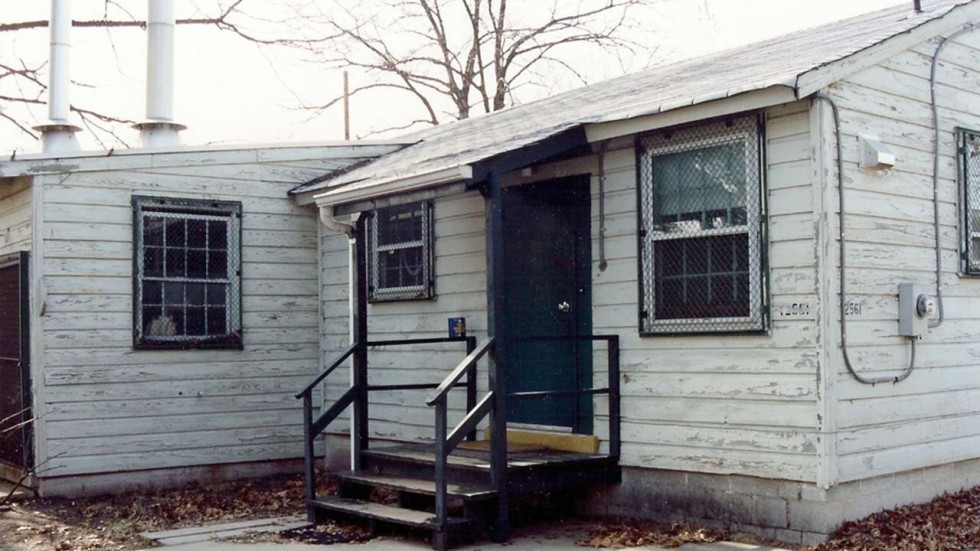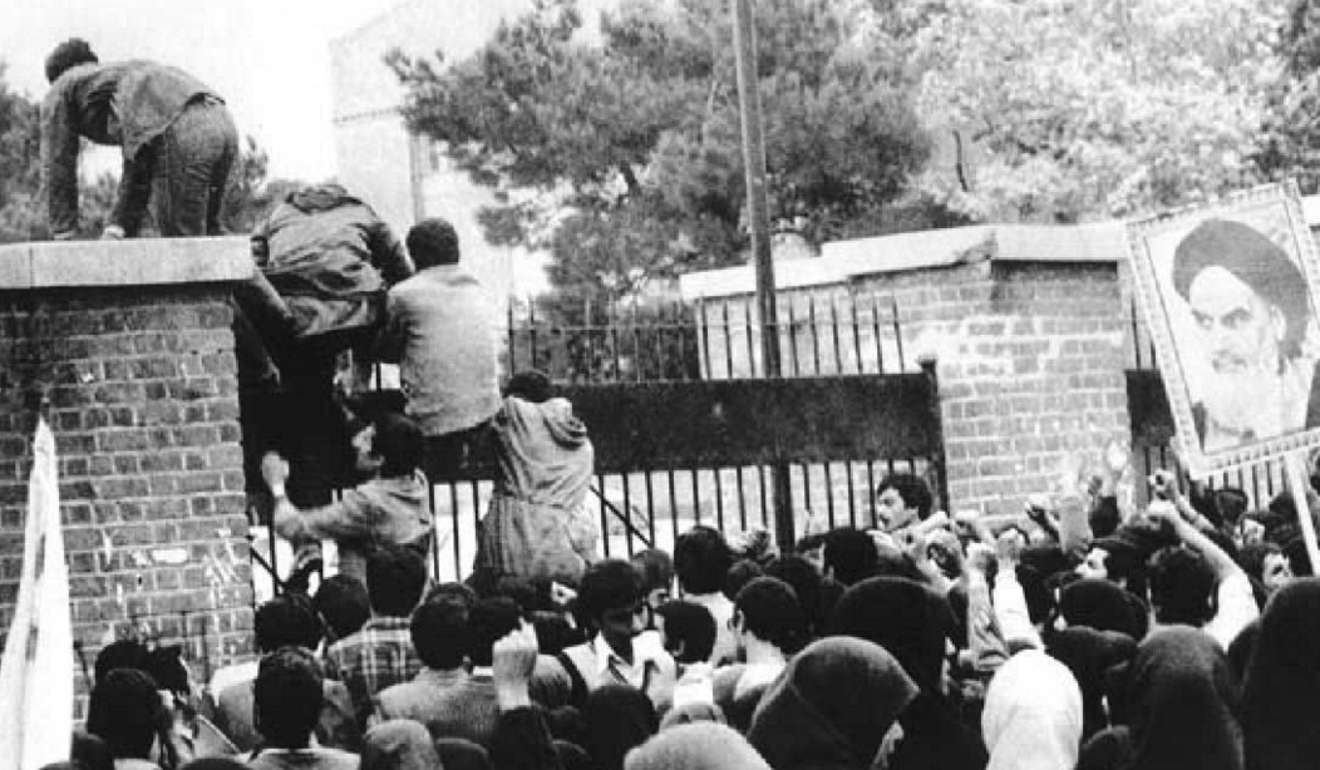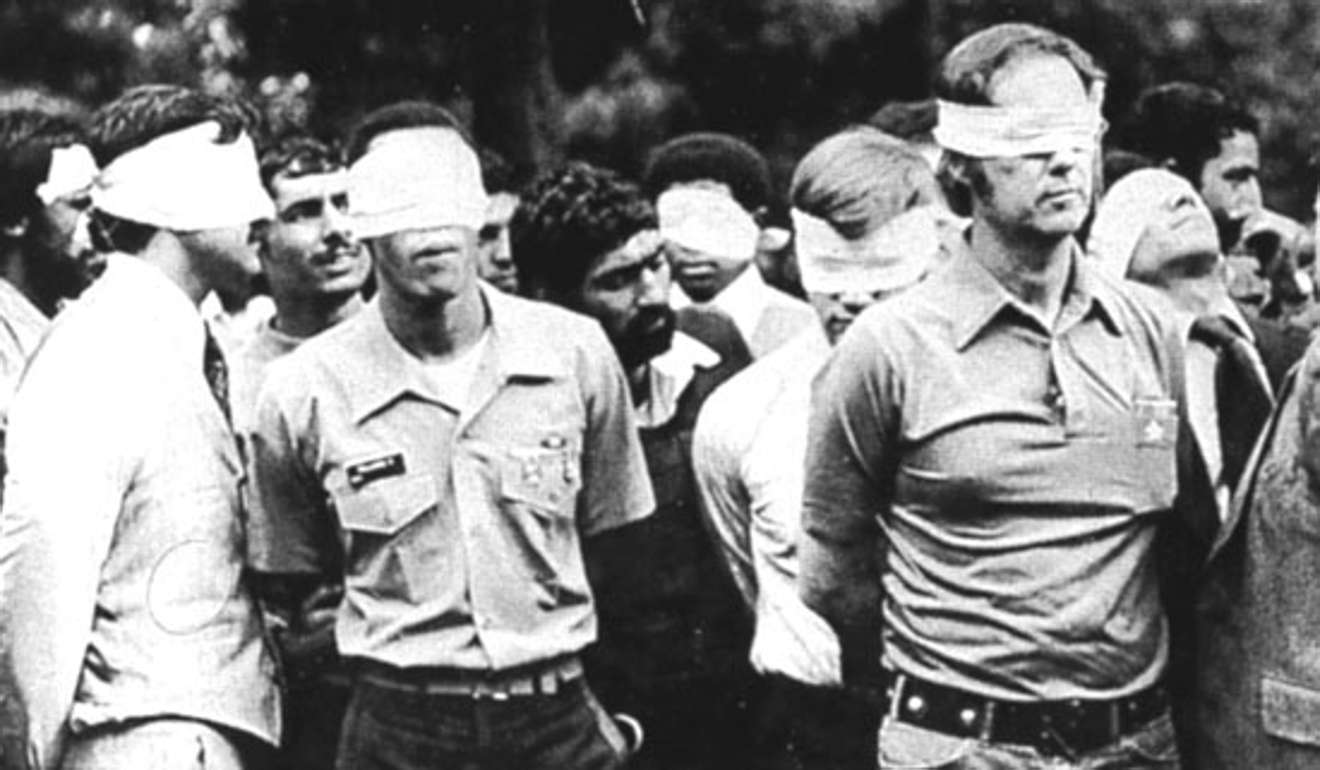
In an operation code-named Grill Flame, half a dozen psychics on more than 200 occasions tried to peer through the ether to see where the hostages were being held, how closely they were guarded and the state of their health
The dozens of American diplomats taken hostage
by revolutionary students who seized the US embassy in Iran in 1979 may
have had some secret company during their 15-month captivity: US
intelligence agencies had a squad of military-trained psychics using ESP
to watch them, according to declassified documents in a newly available
CIA database.
In an operation code-named Grill Flame, half a
dozen psychics working inside a dimly lit room in an ancient building in
Fort Meade, on more than 200 occasions tried to peer through the ether
to see where the hostages were being held, how closely they were guarded
and the state of their health.
Officially, the psychics worked for US Army
intelligence. But the documents in the CIA database make it clear their
efforts were monitored – and supported – by a wide array of government
intelligence agencies as well as top commanders at the Pentagon.
They were even consulted before the super-secret
US military raid that attempted to free the hostages in April 1980,
which ended in disaster when a plane and a helicopter collided at a
desert staging area.
In a memo written on April 23, 1980, one day
before the launch of the rescue mission, one of the chiefs of the
psychic unit told a superior officer that a representative of the Joint
Chiefs of Staff had contacted the unit and “requested we intensify our
efforts and that we attempt to set to up a situation wherein the
possibilities for aborting the mission would be sharply reduced”.
The psychics were able to tell, in some cases, where the hostages were moved to. They were able to see the degree of their health
Whether the psychics provided any useful
intelligence was the subject of a debate among intelligence officials as
heated as it was secret. After the hostages were released in January
1981 and extensively questioned about the details of their experience,
the Pentagon compared the information with 202 reports from the Grill
Flame psychics. “Only seven reports” were proven correct, wrote an Air
Force colonel on the staff of the Joint Chiefs, underlining the number
for emphasis.
More than half, he added, were “entirely
incorrect”. And although 59 contained information that was partly or
possibly right, the colonel noted that “these same reports often
included erroneous data”.
Army officers supervising Grill Flame hotly
contested the Air Force colonel’s evaluation, claiming 45 per cent of
the psychic reports contained some accurate information. And, they
argued, “that was information that could not be obtained through normal
intelligence collection channels. The degree of success appears to at
least equal, if not surpass, other collection methods”.
The debate continues today. “The stuff that the
CIA has declassified is garbage,” one of the Grill Flame psychics,
Joseph McMoneagle, told the Miami Herald. “They haven’t
declassified any of the stuff that worked.” Agreed Edwin May, a
physicist who oversaw parapsychology research for government
intelligence agencies for 20 years: “The psychics were able to tell, in
some cases, where the hostages were moved to. They were able to see the
degree of their health. ... If you can sit in Fort Meade and describe
the health of hostages who are going to be released, so that the right
doctors can be on hand, that’s very helpful.”
Others are more sceptical, to put it mildly.
“The intelligence agencies might as well get a crystal ball out and
stare into space and hope they see something,” said James Randi, a
former professional magician who turned his career into debunking ESP
and psychics. “It’s a huge waste of time and money and it doesn’t help
the hostages one bit.”
Randi’s sceptical perspective was shared by many
inside the intelligence community. William J. Daugherty, a CIA case
officer working in Iran who was captured when the embassy was seized by
the radical students, told the Herald he learned of the psychic probing from colleagues after his release.
“It was at lunch, and they were laughing,” Daugherty said. “It was in the nature of, ‘Can you believe the crazy stuff we did?’”
Operation Grill Flame was just one part of a
broader US intelligence project involving psychics and ESP that
continued for 20 years. It went through as many as 10 different code
names as its management shifted from agency to agency – though it was
mostly supervised by Army intelligence and the Defence Intelligence
Agency – and carried out 26,000 telepathic forays by 227 psychics before
the government shut it down in 1995.
Scores of documents in the CIA database trace
its history and its involvement in everything from searches for missing
aircraft to tracking shipments of illegal drugs. Established in 1975
after a series of more fleeting encounters between the intelligence
community and the parapsychological world, the programme was originally
more of a research project than a spy mission, one of the odder parts of
the perpetual arms race of the cold war.

“Mostly at the beginning, we were doing foreign
assessment – that is, what the other side was doing,” said May, who
joined the programme nearly at its inception. “We’d get a report that
China or Russia was experimenting with psychics who claimed to be able
to do this or that, and our job was to judge whether this was possibly
true and if so, what threat was it to us.”
The programme also began working directly with
psychics. At first it sought out people who publicly claimed
extrasensory powers, but then began searching within the ranks of
military intelligence officers who shared personality qualities with
what it called “established psychics,” especially those with a talent
for “remote viewing” – the mental ability to see across vast distances
and through walls and other obstructions.
“Successful remote viewers tend to be confident,
outgoing, adventurous, broadly successful individuals with some
artistic bent,” said an Army colonel who managed Grill Flame said in a
briefing on the program’s history that was widely delivered to top
echelons of the Pentagon and civilian intelligence agencies in 1982 and
1983. (A transcript is among the documents on the CIA database.)
From hundreds of candidates, project managers
selected six for psychic training. And in the fall of 1979, Grill Flame
abruptly went from theory to practice when the six were put to work
looking for a missing US Navy plane.
On September 4, 1979, the psychics were able to
pinpoint the location of the missing plane to within 15 miles. Other
details of the search for the plane are blacked out in CIA documents,
but Jimmy Carter, who was president at the time, may have been alluding
to it in an interview he gave 12 years ago.
We’d get a report that China or Russia was experimenting with psychics who claimed to be able to do this or that, and our job was to judge whether this was possibly true and if so, what threat was it to us
“We had a plane go down in the Central African
Republic – a twin-engine plane, small plane. And we couldn’t find it,”
even with satellite photography, Carter said. “So the director of the
CIA came and told me that he had contacted a woman in California that
claimed to have supernatural capabilities. And she went in a trance, and
she wrote down latitudes and longitudes, and we sent our satellite over
that latitude and longitude, and there was the plane.”
That seemed to validate the ESP approach to
intelligence, at least to some officials, and the psychics were put to
work at other tasks – though Grill Flame overseers fretted that if news
leaked out that the American government was using psychic spies, the
programme would be buried in ridicule. They were particularly worried
about William Proxmire, the Democratic senator from Wisconsin, who each
month issued a sarcastic (and highly publicised) Golden Fleece Award to
government programme he regarded as boondoggles.
But fears of renegade politicians were swept
away when the students burst into the embassy in Tehran a week later and
took more than 60 diplomats hostage. As American intelligence hit a
stone wall in its efforts to find out exactly what was happening inside
the embassy – the hostages included all the CIA officers in Iran – the
military turned in frustration to the psychics.
On November 21, the Joint Chiefs task force on
the hostage crisis asked Grill Flame managers for help. Two days later,
after looking at pictures of the hostages in Time magazine, two
psychics went to work on a mental search of the embassy. Twelve more
attempts would be made over the next three weeks.
The viewing sessions, as they were called, took
place in a soundproof, windowless room in an old building in Fort Meade,
about 30 miles northwest of Washington, the home of a number of
intelligence agencies. “Everything inside the room was grey, very
nondescript,” said McMoneagle, one of the six Grill Flame psychics.
Each session included only two people, a psychic
and an intelligence officer, known as an interviewer. The interviewer
gave the psychic a target: typically a photo of a person or place, a
map, or a set of geographic coordinates. In the early days, the target
information was usually placed in a sealed envelope so the psychic had
no visible clue what he was looking for beyond what came into his mind.
But as the hostage crisis dragged on, that rule was often disregarded.
Most sessions lasted around 30 minutes. They were tape-recorded, and sometimes the psychics sketched things they had seen.
“You have to open your mind to anything at all,”
said McMoneagle, who except for a fairly typical near-death experience a
decade earlier during a bout of food poisoning (“you know, a tunnel, a
voice saying ‘move toward the light,’ you’ve heard it a thousand times”)
had never had a psychic episode before his military training. “And then
you describe it.”
The psychics were just as good as other human intelligence sources. And, unfortunately, they were just as bad. Human beings are notoriously horrible at the second world war-type spying, standing out there with binoculars, counting tanks.
A transcript of a viewing session on December
29, 1979, at least from a procedural perspective, shows the typical
interplay between psychic and interviewer.
The psychic was shown a picture of one of the
hostages: Tom Ahern, the embassy’s CIA station chief. “I want you to
hold that image of that individual in your mind while you visualide the
area where he is located,” said the interviewer. “Locate this individual
and describe what he is doing. Describe his locations and his
surroundings. Relax and concentrate, relax and concentrate.”
“I seemed to be in the midst of an explosion of
activity,” replied the psychic. “[There] appeared to be a lot of people
dressed in, of all things, flowing robe ... [I] distinctly had the
impression of a lot of white robes or smocks of people.”
Those people, he added, were running “helter-skelter all over the place”.
“As if there were a crowd of people suddenly
somebody started shooting into the crowd,” he continued. “Some appeared
to be falling and others just appeared to be scattering everywhere.
Funny thing is, I didn’t hear any gun shots, or anything. ... Maybe it
was tear gas or something.”
From there the psychic’s vision abruptly flashed
to a jail cell, looking out onto a courtyard, and finally to man in a
light brown suit lying on a red oriental carpet (”that didn’t make any
sense at all”). The psychic finished by making some crude sketches of
the disturbance, the cell and the floor plan of the cellblock.
“Either that’s the one of the worst sessions I’ve ever had or one of the best,” the psychic ruefully concluded.
The session was typical in at least one other
way: It was mostly dead wrong. Aside from the day the embassy was
actually seized, there was never a disturbance or a gunfight inside the
compound in the entire time the hostages were held there.
“I never saw or heard anything like that during
the time we were hostages,” said former captive Daugherty. “I never once
smelled tear gas. Very occasionally you would hear a gunshot, because
the guards were mostly kids with no experience with firearms, and they’d
forget to put the safety of their gun on, and then they’d drop it and
it would go off. But it was always a single shot, never a prolonged
burst.”
Even the description of flowing white robes
seems quite unlikely to him. By Christmas of 1979, the students who took
over the embassy were mostly alienated from the Muslim clergymen who
were originally their allies.
“You never saw the clergymen anymore by that
time, and the students were just young guys in jeans and sweaters,
western clothing,” said Daugherty.

The psychics’ work after the failed rescue
mission was, if anything, even less accurate. Their student captors,
realising that keeping all the hostages inside the embassy grounds had
been practically an invitation for an American military raid, began
scattering them literally all over the country. The psychics were
assigned to hunt them down. But many of their reports were wrong,
sometimes by hundreds of miles.
On May 2, 1980, a psychic confidently declared
that Lieutenant Colonel David Roeder, the embassy’s Air Force attache,
was being held in a “very expensive” yellow stone house – “a really
private, really expensive home” – just six or seven blocks away from the
embassy. And “he is definitely with (CIA station chief) Ahern”, the
psychic added. He drew several detailed pictures of the home and
grounds.
Actually, Roeder was being detained in an
abandoned art school in the city of Qom, several hundred miles away. And
Ahern was locked up in a Tehran prison. Similarly, Bob Ode (a retired
foreign service officer who had the bad luck to be on a temporary job in
the consulate when the embassy was seized) was not in a multistory,
castlelike building outside the embassy, as a psychic reported on June
3. Ode was one of a few hostages who never left the embassy.
Such mistakes don’t bother the psychics or their
supporters. They argue that no method of collecting intelligence is
anything close to fool-proof, and nobody should expect psychic spying to
be any better.
“The psychics were just as good as other human
intelligence sources,” said May, the physicist who worked with Grill
Flame. “And, unfortunately, they were just as bad. Human beings are
notoriously horrible at the second world war-type spying, standing out
there with binoculars, counting tanks. There are all kinds of biases
that can creep in.”
Grill Flame, under different code names,
continued for another 14 years after the Iranian hostage crisis ended.
But in 1995, after an outside review commissioned by the CIA concluded
that “remote viewing reports failed to produce the concrete, specific
information valued in intelligence reporting,” the program was shut down
and has never resumed. Its epitaph, at least according to its critics,
had been written eight years earlier, when The Washington Post got a
vague whiff of intelligence money going to parapsychological projects.
Stansfield Turner, then the CIA’s director, told
a reporter that the CIA had once worked with a man who claimed the
capability of remote viewing. But the man had died two years earlier,
Turner said with a straight face, “and we haven’t heard from him since.”
This article appeared in the South China Morning Post print edition as:
c.i.a. used psychic spies in iran hostage crisis

Post a Comment Blogger Facebook Disqus